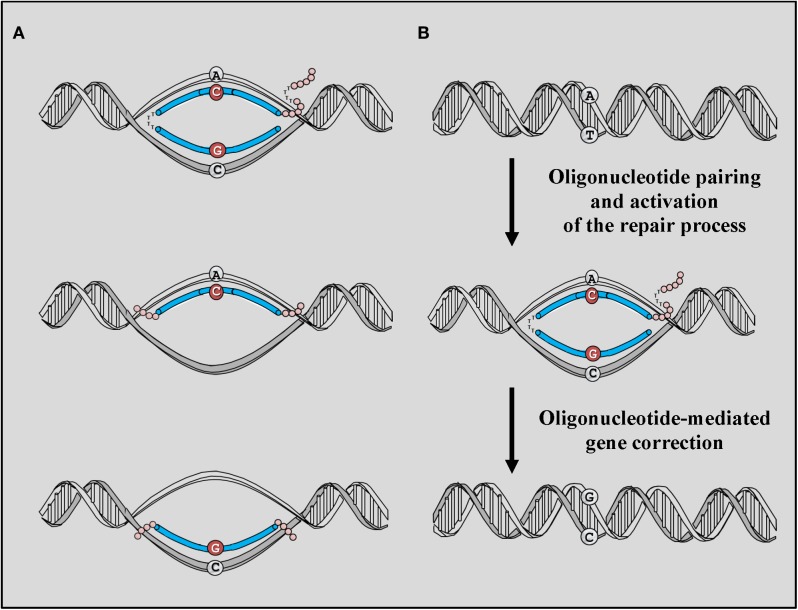Figure 2.
ODN-mediated gene editing. (A) The basic structure of targeting ODNs consists of a stretch of DNA perfectly homologous to the region of the gene that is targeted for correction with the exception of a single base mismatch. A chODN contains a complimentary region composed of 2′-O-methyl RNA interrupted by a pentameric block of DNA bases while ssODNs consist of unmodified DNA bases and can be complimentary to the coding strand or complimentary to the non-coding strand of the gene targeted for correction. Phosphorothioate (PS) bases are added to the each end of the ODNs to increase their stability to endonucleases. (B) The correction process is activated by the pairing of ODN with the genomic sequence targeted for repair. Recognition of the mismatch present on the ODNs activates innate repair mechanisms naturally present in the cell nuclei and capable of directing the correction based on the information provided by the ODN template. The process require the presence of protein such as RecA and MSH2 capable of recognizing and correct the mismatch.

